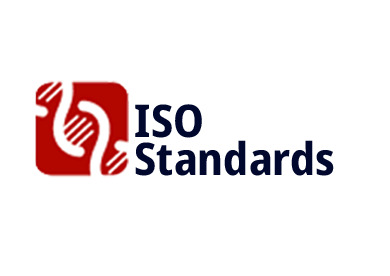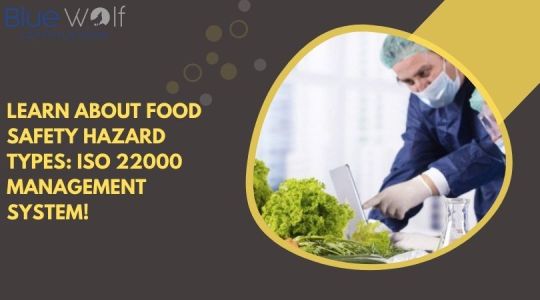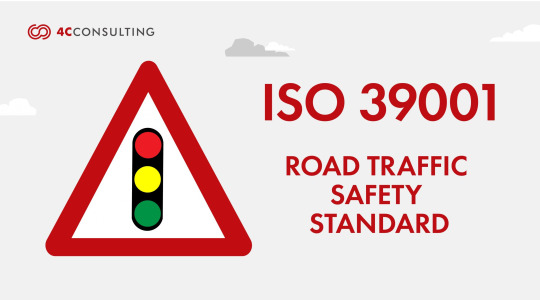#iso for safety management
Text

ISO Standards
We are an expert ISO Certification Consultants offering our ISO services in all across the United States and Globally
Navigating success together: We transform challenges into opportunities, delivering expert ISO standards solutions for your business breakthroughs. We help you empowering success through tailored strategies to obtain the ISO standards Certification.
#ISO consulting#iso certification services#iso certification online#iso 9001 standards#get iso 27001 certified#iso 270001 certification#iso for safety management#iso 20000 certification
1 note
·
View note
Text
What Is The Objective of the Food Safety Management System?
The need for a food safety management system was felt after the development of food businesses. Many people started selling edible items under different brand names. Also, they started using packaging technology to keep the edible items safe and extend their shelf-life. Food has a short shelf-life but it can be increased by treating the items.
Visit us - https://medium.com/@isostandards.usa/what-is-the-objective-of-the-food-safety-management-system-16e1822523b8
#iso 14001 environmental management system#iso environmental management system#Food Safety Management System#iso 27001 certification consultants#iso 27001 information security management system
0 notes
Text
What does ISO safety entail?
Do ISO safety standards, established by the International Organisation for Standardisation, serve as the cornerstone of operational excellence and sustainability in the contemporary business landscape? With a focus on quality, safety, and efficiency benchmarks, these standards provide businesses with a structured framework for ensuring compliance and enhancing overall performance. Going beyond regulatory requirements, implementing ISO safety measures reflects a strategic commitment to safeguarding employees, mitigating risks, and fostering continuous improvement. [Read more]
Looking to elevate your organisation's safety standards? Consider partnering with iSafe—Health, Safety, and Quality Services. Our team of experts specialises in guiding businesses through the intricacies of ISO safety compliance, offering tailored solutions to surpass standards. From conducting risk assessments to implementing comprehensive training programmes, iSafe is your dedicated ally in achieving and maintaining excellence in health, safety, and quality.
#health-and-safety#health and safety#health and safety at work#workplace safety#health and safety consultants#management-health-safety#risk management#cdm#construction design management#principal designer#iso9001#iso safety
0 notes
Text
ISO22000:2017
Food Safety Management

Benefits
1) Safer food
2) Less food wastage
3) Safer Kids
4) More profitable food business
5) Sustainable
Key Requirements
a) Food safety Policy
b) Determination and application of SOPs
c) Determination and application of all PRPs
d) Risk Assessment
e) O-PRPs for all high risks
f) Apply GMPs for food based manufacturing units
#iso consultancy services#iso 14001#iso 45001#iso approved#iso 9001 certification#iso certification#iso 9001#iso 27001#iso accreditation#iso certification consultancy#Food Safety Management
0 notes
Text

iso 45001 2018 Occupational health and safety management system
KBS provides you with the best ISO 45001 2018 OHSMS (Occupational Health And Safety Management System)
0 notes
Text
Implement an ISO 45001 2018 occupational health and safety management system

If you want professional support to implement a proactive ISO 45001 2018 occupational health and safety management system, then get from Compliancehelp Consulting LLC. From gap assessments to a readiness review, discover comprehensive packages that meet your budget. Contact us here at https://www.quality-assurance.com/ now and receive a new quote today!
0 notes
Text
Learn About Food Safety Hazard Types: ISO 22000 Management System!
Do you know that around 128,000 people get hospitalized every year due to foodborne illness in the United States?
While the numbers are saddening, it's not surprising considering the complex supply chain of the food manufacturing industry.
This is why the ISO 22000 food safety management standard has made food hazard identification one of the foundational requirements of the standard.
Once you identify the potential food hazards threatening your company, you can easily create plans to eliminate them.
In today’s blog, we are looking at the different types of classifications of food hazards to spread awareness.
So, if you want to make your food products safe for consumption, continue reading!

What is a Food Safety Hazard?
A food safety hazard is an element or substance that can contaminate food materials and lead to health problems in consumers. Food contamination refers to the presence of hazards in food.
Contamination can occur at any step of the food supply chain, such as transition, harvesting, packaging, processing, serving, delivery, and storage.
It is one of the reasons why the ISO 22000 food safety management standard encourages hazard control in every domain of the food industry.
Furthermore, food hazards can be present in some food naturally, and at other times, some external source may introduce the hazard. Each food hazard type needs specific controls to eliminate them.
The Four Most Common Types of Food Hazards
Most experts classify food safety hazards into four categories: biological, physical, chemical, and allergens.
Biological hazards
Biological hazards primarily originate from living organisms. This type of hazard has its own sub-divisions, such as spore-forming bacteria, non-spore-forming bacteria, parasites, protozoa, and viruses.
Some common examples of biological food hazards are:
Bacteria
Fungi
Yeasts
Parasites
Viruses
These biological hazards are among the most common causes of outbreaks. They depend on:
Nutrients of the food
Its pH level
Time
Temperature
Oxygen
Moisture level
The most common sources of biological hazards include:
Raw materials
Water
Food handlers
Storage
Contact surfaces
Equipment
Pests
Chemical hazards
Chemical hazards have four classifications: naturally occurring, from packaging materials, added, and contaminates.
Naturally occurring chemical hazards are the ones that you can naturally find in any food, such as saponins from legumes. The rest of the chemical hazards contaminate the food intentionally or unintentionally through the supply chain.
Typical sources of chemical hazards include:
Raw materials
Heat treatment
Preservatives or additives
Cleaning agents
Soil conditioners
Physical hazards
Physical hazards refer to extraneous material or foreign objects that can result in injury or contamination.
This type of hazard can come from several sources, such as:
Product
Packaging
Plant
People
Premises
Metal fragments, stones, bones, and glass shards are common examples of physical hazards.
Allergens
Allergens are hazards caused by proteins. This type of hazard may affect some individual’s immune systems, making them dangerous to consume.
Since proteins are a natural part of the food system, preventing allergy hazards can be challenging. But a clever way to start is being transparent about the ingredients included in your food so the buyers can avoid the allergy-causing items.
The most common allergens include:
Eggs
Milk
Shellfish
Peanuts
Tree nuts
Wheat
Soybean
Fish
Sesame
Mustard
Mollusks
Sulfites or sulfur dioxide
Lupin
Celery
Summing Up
Once you identify which type of food hazard poses the most significant threat to your supply chain, you can use the food hazard assessment guidance of ISO 22000 food safety management standard. It will help you identify the root cause of the threats and address them promptly. You can check out clause 8.5 of ISO 22000 to learn more about the requirements regarding food hazard and analysis.
0 notes
Text
Workplace injuries can give a poor rep to firms. The implementation of ISO 45001 certification for occupational health and safety management system is crucial.
0 notes
Text
The requirements for a food safety management system (FSMS) are outlined in ISO 22000, a global standard. Through the whole food supply chain, it offers a systemic and comprehensive approach to managing food safety threats. The ISO 22000 certification, which recognizes your dedication to guaranteeing the food safety of the food you supply, is a badge of honour for anyone who produces, processes, or distributes food.
#ISO 22000 manual#ISO 22000 documents#ISO 22000 certification#Food safety#food safety management#food safety management system#ISO 22000#FSMS
0 notes
Text
In its most basic form, ISO 22000 is a comprehensive framework created to address the industry's complex problems and construct successful food safety management systems. Knowing and adopting the ISO 22000 standard provides you with the ability to establish your company as a leader in the safety of food while simultaneously satisfying the ever-expanding requirements of consumers and regulatory agencies.
#ISO 22000 manual#ISO 22000 documents#ISO 22000 certification#Food safety#food safety management#food safety management system#ISO 22000#FSMS#ISO 22000 Audit checklist
0 notes
Text
Businesses face challenges that go beyond offering an emergency response plan or having first aid procedures that have been in place and are currently being used. Since businesses must develop road traffic safety plans to ensure smooth operation within their working environment, as well as to improve the safety of their drivers, increase legal compliance, decrease accidents and fatalities, decrease work absences, and shrink crash-related costs,ISO 39001 awareness training is crucial to understand ISO 39001 requirements and for promoting road safety. The 2012 release of the ISO 39001 road traffic safety (RTS) standard outlines the fundamental needs for an RTS management system suitable for governments, fleet operators, and any other public or private body interacting with the road traffic system.
#ISO#ISO 39001#ISO 39001 training#ISO 39001 Awareness training#road safety#road safety management#road safety management system
0 notes
Text
ISO 39001 Overview
Around 1.35 million lives are cut short annually due to automobile accidents on the roads. There are an additional 20 to 50 million non-fatal injury victims, many of whom develop disabilities as a result of their injury (2018 World Health Organization). An ISO 39001:2012 compliant road traffic safety management system (RTSMS) can help enterprises that interact with the road traffic system increase safety, lower incident rates, and lower the risk of serious injury or fatality from traffic-related accidents. By having your organization RTSMS certified, you can be sure that it is operating efficiently and in accordance with your system’s goals and policies.

WHAT IS ISO 39001?
The international standard ISO 39001 establishes the framework for the Road Traffic Safety Management System (RTSMS). The danger of injuries or fatalities brought on by traffic accidents can be decreased, which can help organizations that operate with the road traffic systems. Companies that are dedicated to enhancing traffic safety will gain from implementing ISO 39001 into practice. Certification to the standard will help your organization implement your company’s road safety management system objectives and action plans within your operations.
WHY TO IMPLEMENT ISO 39001 FOR MANAGING ROAD TRAFFIC SAFETY?
Road injury prevention calls for systematic management throughout the public and commercial sectors, a clear focus on achieving results, and significant shared accountability. Organizations of all shapes and sizes can benefit from using ISO 39001 to manage road safety. Organizations implementing ISO 39001 can reap the following benefits;
Participate in efforts on a national and international level to stop the death and serious injury caused by car accidents.
Establish organizational dedication to a critical public concern.
Address one of the main occupational safety issues the organisation faces.
Reduce organizational accident and incident costs, as well as working days missed due to injuries
Targeting road safety hazards requires making the greatest use of the resources at hand.
Promote the company, raise its profile, and boost sales.
Boost your competitive edge in the tendering process.
Reduce the cost of repairs and insurance.
0 notes
Text
The difference between first party, second party and third party audit
The difference between first party, second party and third party audit
Management system auditing offers an opportunity to conduct an audit to verify and ascertain how a particular system is fairing. To determine this, an organisation can embark on an audit for themselves, hire someone, or rely on certification bodies depending on the type of audit applicable to them.
An audit is an exercise…

View On WordPress
#AUDITING#FIRST PARTY AUDIT#HEALTH AND SAFETY#ISO#MANAGEMENT SYSTEM#SECOND PARTY AUDIT#THIRD PARTY AUDIT
0 notes
Text
Food Safety Management

Benefits
1) Safer food
2) Less food wastage
3) Safer Kids
4) More profitable food business
5) Sustainable
Key Requirements
a) Food safety Policy
b) Determination and application of SOPs
c) Determination and application of all PRPs
d) Risk Assessment
e) O-PRPs for all high risks
f) Apply GMPs for food based manufacturing units
#ISO Consultancy Services#Road Traffic Safety Management System#ISO 39001:2012#On the Road to Safety#RTSMS Policy#RTSMS#road safety is a journey#Quality Management Systems#ISO9001#road safety#ISO9001 compliance
0 notes
Text
#medical devices quality management system#environmental management system#occupational health & safety management system#food safety management system#energy management system#information security management system#privacy information management system#iso 9001 certification 2015#business continuity management system#it service management system#iso 21001 2018#iso 14001 2015#iso 45001 2018#iso 22000 2018#iso 50001 2018#iso 37001 2016
0 notes
Text

ISO 45001:2018 Occupational Health and Safety Management System Expert
Want to increase the safety of your employees at the workplace? Contact our ISO 45001:2018 occupational health and safety management system experts today! Compliancehelp Consulting LLC has helped hundreds of companies across industries achieve the ISO 45001 certification through our bespoke and industry-specific guidance. We offer the ISO 45001 training, implementation and documentation services, internal audit and readiness assessment, and more.
Visit http://quality-assurance.com to request a free quote.
0 notes